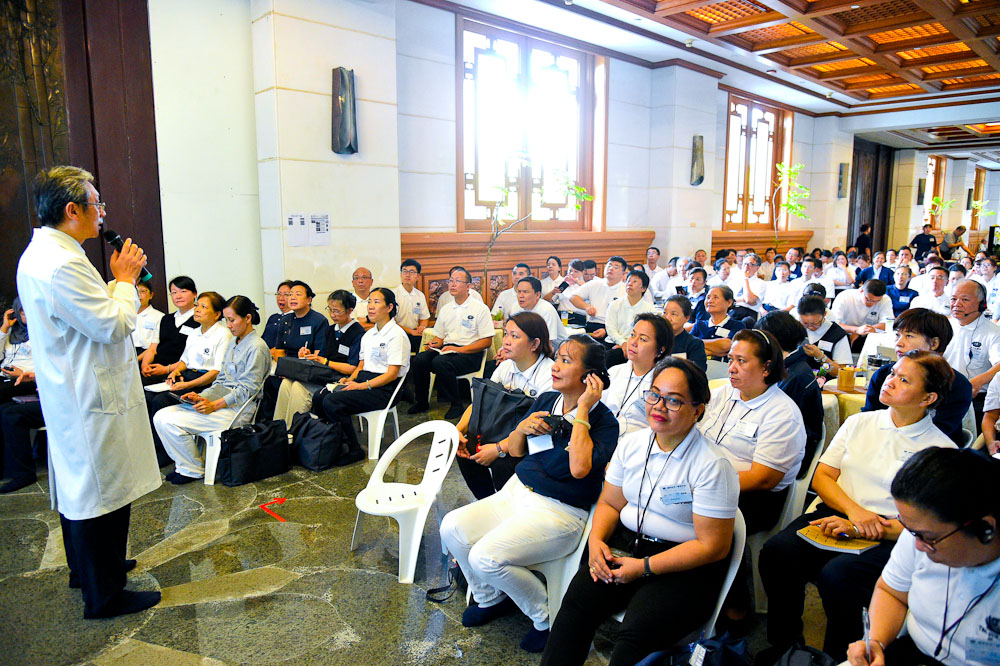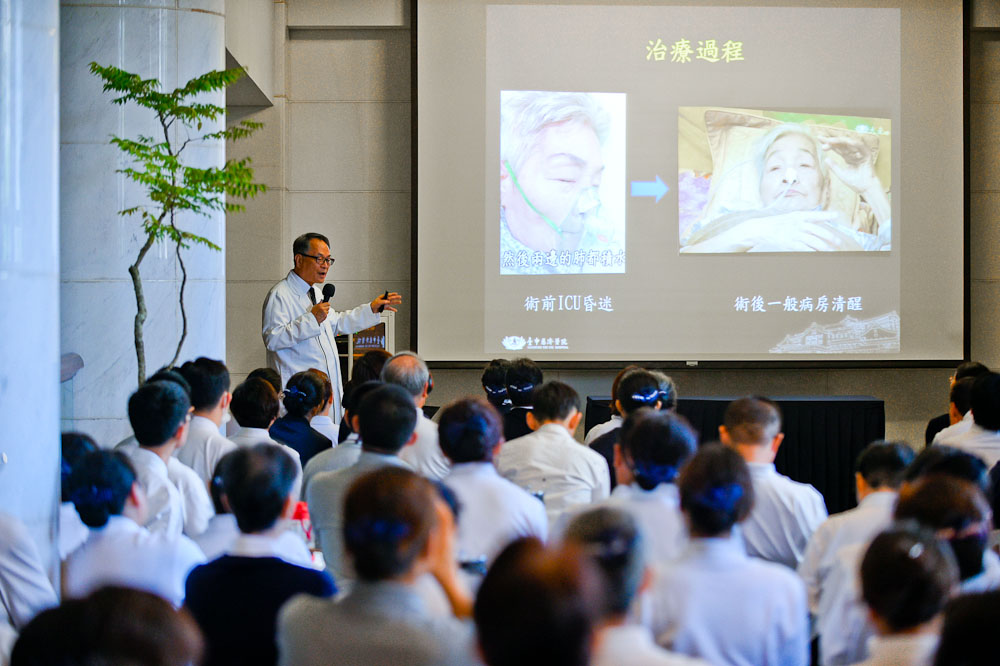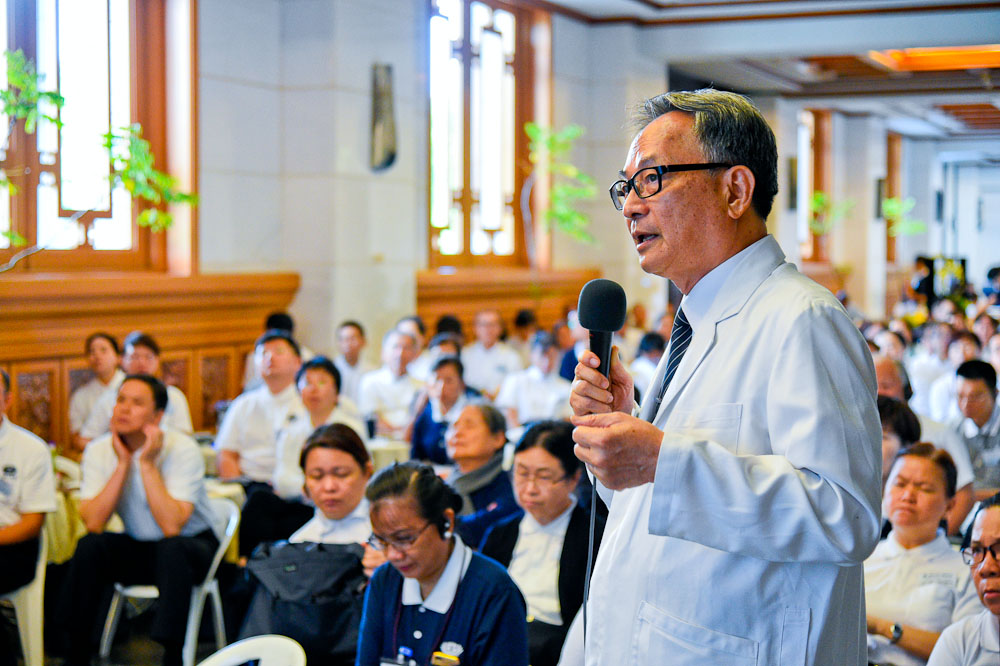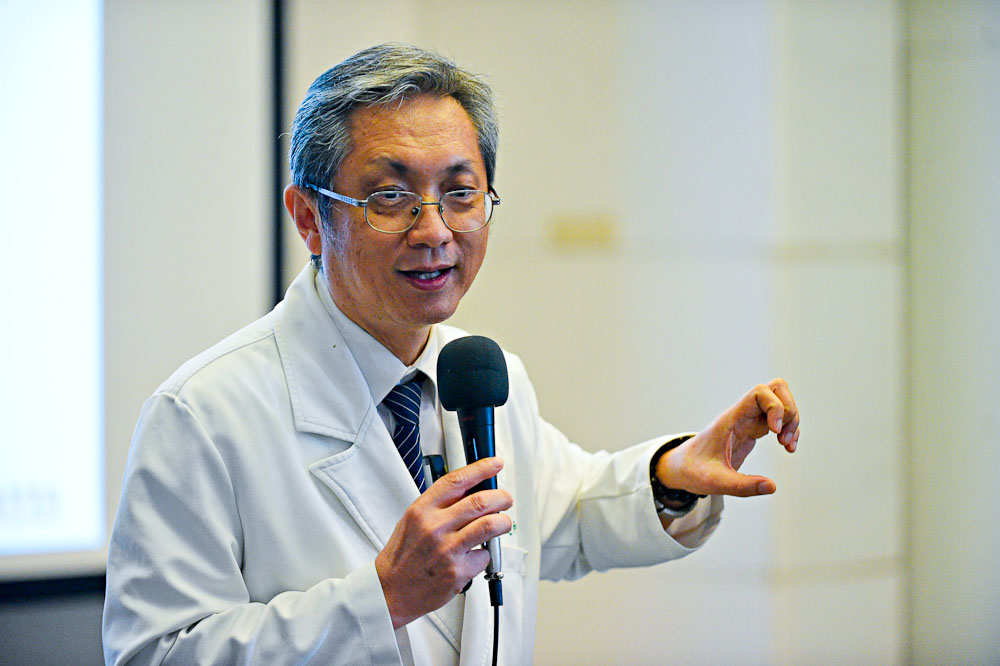Written by Jessica Huang Photographed by Tang-Ming Ye
Translated by Margret Lee & Yuaner Wu
At the TIMA convention, the Director of the Chinese Medicine Department of Taichung Tzu Chi Hospital, Dr. Jian-Zhong Chen opened the Chinese medicine sub-session on how the hospital carries out its mission by stating "Master Cheng Yen once stated that she hoped to establish the use of Chinese medicine in Tzu Chi’s hospitals." In this way, he attracted participants’ attention before speaking about his wish to establish a Chinese medicine healthcare service with Tzu Chi’s spirit and values within this Tzu Chi hospital.
On the Establishment of Tzu Chi Traditional Chinese Medicine
"This is the tenth anniversary of Taichung Tzu Chi Hospital’s, and the tenth anniversary of the Department of Traditional Chinese Medicine," explained Dr. Chen, who talked about the ten years of work the hospital’s medicine practitioners, including the development of Chinese medicine out from the hospital into the community. "We are working with Tzu Chi volunteers to do all of this," he explained. The hospital has also set up Taiwan’s first "Clinical Integration Research Center for Chinese and Western Medicine", the present home of the administrative center for Chinese and Western medicine cooperation in Taiwan. The department’s "Chinese and Western medicine joint outpatient service" was awarded Taiwan SNQ international quality mark certification in 2016. The Clinical Integration Research Center helped to set up Tzu Chi University’s Postgraduate Department of Traditional Chinese Medicine to cultivate excellence Chinese medicine. In order to protect the health of the community, the center has begun training Chinese medicine volunteers. Chen said, "One in ten of the volunteers are from Tzu Chi volunteers, nine out of ten are not, but the community of local people is interested and willing to invest. This is very moving". The hospital’s Chinese medicine department is led by Tzu Chi, and based on sound medical practice, combined with charity, education and Tzu Chi’s spirit and values.
Dr. Chen explained that at the 2008 TIMA convention there were no Chinese medicine sessions available, so he had to select sessions on Western medicine. But before the start of the first session, he along with Chinese doctors from the United States, Argentina, Canada, Australia and New Zealand decided they were not going to take part in these. Instead, they went to ask those in charge of the program whether there was a suitable room available so that they could run their own session. As a result, since the 2009 TIMA convention, there have been sessions devoted to Chinese medicine.
To celebrate the work of the hospital’s department of Chinese medicine over the years, Dr. Chen distributed copies of its tenth anniversary DVD among delegates as goodwill gifts. “There’s a copy for everyone!” he said, immediately creating a very lively atmosphere. Then, in the short space of thirty minutes, Dr. Chen briskly introduced the cloud system used by the department of Chinese Medicine, its teaching program, and its keenly anticipated plans for future development.

Dr. Chen talks about the ten years of work of Taichung Tzu Chi Hospital’s Department of Traditional Chinese Medicine, which promotes the combination of Chinese medicine with charity, education and humanities.
The integration of Traditional Chinese Medicine and Western Medicine is a diversified therapy for critically ill patients
Vice Superintendent Wang, Ren-Shu is in charge of the integration of TCM and Western Medicine in the six Tzu Chi hospitals. He was the host of the third group discussion. Dr. Wang showed a picture of Taichung Tzu Chi Hospital and commented that it was a very beautiful building. It is like a palace, temple, and monastery. Typically, Tzu Chi buildings are built with a roof in a shape similar to the Chinese character “human”. It represents a people centered ideology. Upon entering Tzu Chi hospital, one can easily see a picture of Buddha treats the ill. Master always says seeing patient is the first of the Eight Merit. To us, seeing patient is a doctor’s duty. It is not a merit.
Dr. Wang presented two cases to elaborate how diversified treatments were used to treat patients in critical conditions.
The first case was a male patient in his 60’s. After seeking treatments for his joint pains in other hospitals for six months, he came to Taichung Tzu Chi Hospital. A Chest doctor thought it was unusual to have pain in the nighttime. An image study showed that he had stage 4 prostate cancer. Patient and his daughter refused to have chemotherapy. He came to Dr. Wang to seek for other treatments such as hormonal therapy or Gerson therapy (more vegetables, no salt, propolis, low fat, low protein, coffee enema).
Dr. Wang said: although never heard about it, we do not discriminate against it. We try to understand it and evaluate its credibility. According to his analysis, patient had constipation and mushroom-like polyps in the colon. Although never heard about it, he could accept patient’s claim of the effectiveness of using coffee enema. He could accept no salt diet because patient could tolerate it and most of food got salt and sugar. In old TCM textbook, propolis can be used to treat cancer. In addition to hormonal therapy, TCM has improved patient’s survival rate from 3.5 years to over 6 years. Patient’s tumor and bone pain were better controlled. Furthermore, that patient wrote a book about those treatments and gave it to me. I asked my students not to reject it and try to understand it. Dr. Wang reminded us that diversified treatments sometimes might have a better outcome.
The second case was about a patient with diabetic gangrene that complicated by sepsis. Patient was an eighty-five years old lady. A below the knee amputation was expected. She refused the surgery. Dr. Wang told her and her family: my 85-year-old mother fell and had an urgent operation. Two weeks later, she was able to get out of bed to walk. My aunt was about 85 years old when she fell. Her family refused surgery. She died two months later. I told her that she needed the amputation. She might die in 7 days if the gangrene moved up to her thigh.
Finally, her family accepted amputation surgery. But, the surgery should be done without intubation. With her diminished heart and lung function, Dr. Wang called a meeting for patient-centered therapy and invited an anesthesiologist, a general surgery, an infection control doctor and a TCM doctor. The anesthesiologist was fine without general anesthetics. But, the operation time has to be shortened. Then, they found the fastest surgeon Dr. Yang, Chao-Gi who agreed to take the case. Every doctor on the team provided the most appropriate treatments. Consequently, the operation was successful. Due to immobility, patient could not come to hospital. Doctors and nurses went to her house to take care of her surgical wounds and bed sore.
TCM and Western Medicine are two very different sciences. Based on patient’s understandings, practitioners can convince patient that integrated medicine can bring the best outcomes for the patient. Dr. Wang told attendees that he practiced Western Medicine for 7 to 8 years and TCM for over 20 years. In Tzu Chi, it is doctor’s responsibility to promote integrated medicine. With limited time, Dr. Wang inspired us with two difficult but successful cases. In the end, he said that he saved some interesting stories to be shared in the next encounter.


